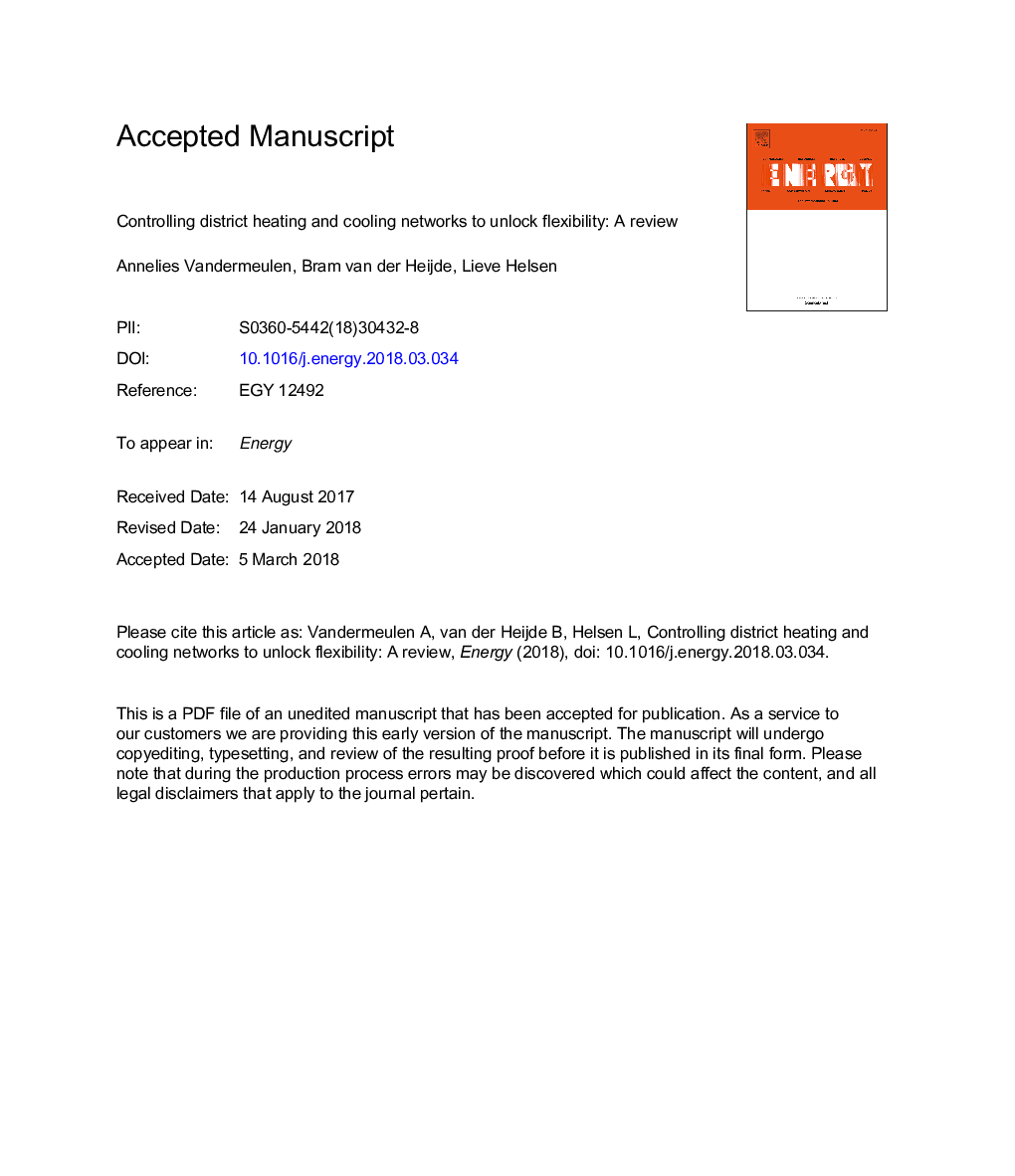| Article ID | Journal | Published Year | Pages | File Type |
|---|---|---|---|---|
| 8071732 | Energy | 2018 | 44 Pages |
Abstract
Flexibility in district heating and cooling systems (thermal networks in general) is an important means to cope with the intermittent generation of heat and electricity as the share of renewable energy sources (RES) increases. An important source of flexibility is the thermal energy storage present in district heating and cooling networks, found in the thermal inertia of buildings, storage units and the network itself. To unlock this flexibility and to use it effectively and efficiently, a suitable control strategy is required. In this context, this paper presents a possible definition of flexibility and its sources in a thermal network. It reviews techniques to quantify flexibility and shows the need for a more advanced control strategy; moreover, it discusses the challenges involved in developing such a control strategy. Also, the literature on advanced control in thermal networks is reviewed, by making a distinction between central, distributed and hybrid control. Finally, possible future research topics are identified based on the findings.
Related Topics
Physical Sciences and Engineering
Energy
Energy (General)
Authors
Annelies Vandermeulen, Bram van der Heijde, Lieve Helsen,
